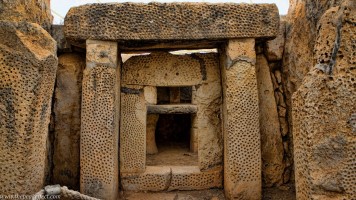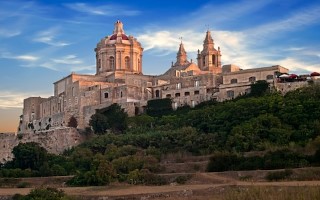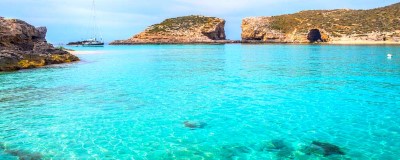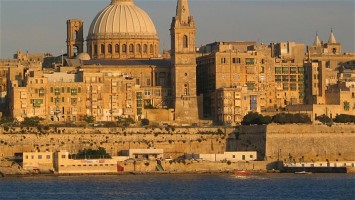THE MALTESE ISLANDS
The Maltese archipelago, located practically in the middle of the Mediterranean Sea and lying 80 km (50 mi) south of Italy, 284 km (176 mi) east of Tunisia, and 333 km (207 mi) north of Libya, consists of a total of 4 islands.
The Main Island is Malta with a sister Island of Gozo, a sparsely inhabited Comino and an uninhabited Filfa Island.
Malta’s population has now exceed 450,000 which, with a land area of 316 sq. kms, implies one of the highest density of population countries in the World. The smallest of all the European Nations and skirting the Southern border of Europe, Malta enjoys superb sunshine practically all the year round. This coupled with a superb history stretching back for millennia (interesting fact Malta’s Ggantija enormous Neolithic stone structure predate the British Stonehenge by quite a few thousand years!) makes Malta an ideal holiday spot. Over a million tourists visit the Island every year and numerous cruise ships make Malta a standard port of call. Having the deepest harbour in the Mediterranean basin does help.
Malta’s history is as varied as can be. It has always been coveted by the military of numerous nations due to its strategic location. Malta was actually awarded the George Cross in recognition of its heroic stand against the Axis powers. Actually Malta was the highest bombed place on Earth (during World War II). In fact, far higher than the density of bombing suffered by the City of London.
Malta’s strategic location means that it has been invaded by the Phoenicians, Arabs, Turks, French and last but not least the British. The latter remained in Malta for over 200 years. This explains the close affinity between Malta and Britain. Indeed English is an ‘official’ national language together, obviously, with the Maltese language. Maltese is a Semitic, Arabic sounding, language which is also officially recognised by the European Union and which Malta joined in 2004.
The country obtained independence in 1964 and was turned into a Republic in 1979. Malta is also part of the Eurozone and a partner in the EU’s Schengen agreement.
The standard of living is highly acceptable despite relatively low wages. The country is experiencing a quantum leap in economic activity with construction driving the GDP to an increase of approximately 4 to 5% pa. Our medical facilities and abilities are second to none and the Maltese enjoy an enviable and very high standard of efficiency in medical care and recuperation.
Malta’s population: 436,947 (2016). 18% of the workforce is foreign (2018)
Malta’s GDP per capita: 25,058 USD (2016)
GDP growth rate: 5.0% annual change (2016)
HEALTHCARE
Malta has a long history of providing publicly funed health care. The first hospital recorded in the country was already functioning by 1372. Today, Malta has both a public healthcare system, known as the government healthcare service, where healthcare is free at the point of delivery, and a private healthcare system. Malta has a strong general practitioner-delivered primary care base and the public hospitals provide secondary and tertiary care. The Maltese Ministry of Health advises foreign residents to take out private medical insurance.
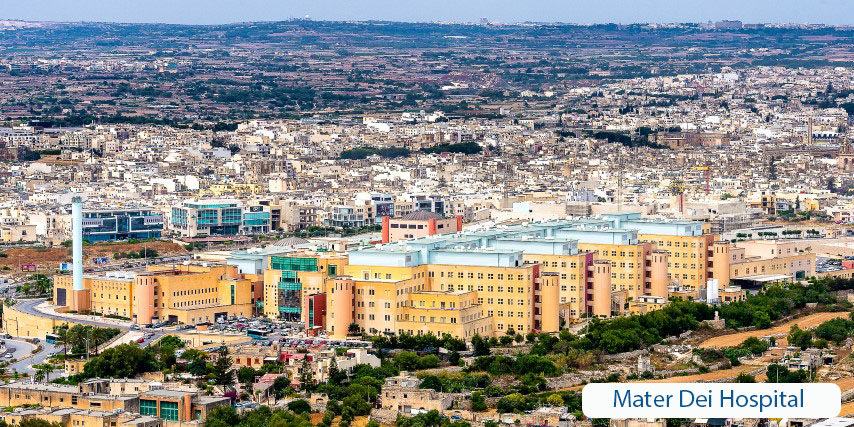
Public Sector
- Mater Dei is Malta’s main public hospital located in Msida. It is an acute general teaching hospital offering hospital and specialist services. The hospital is relatively new; it opened in 2007, replacing the old public hospital St Luke’s. Mater Dei has 825 beds and 25 operating theatres.
- Sir Anthony Mamo Oncology Centre is a specialised hospital for Oncology and Haemato-Oncology. The hospital offers both inpatient and outpatient services.
- Mount Carmel Hospital in Attard is a mental health hospital that offers both in- and out-patient services. This hospital prides itself on the professionalism and capabilities of human resources and takes a multi-disciplinary approach in all its psychiatric services offering its patients holistic and customised psychiatric, psychological and social care. For more information about the hospital and for contact details, click here.
- St Vincent de Paul Residence is Malta’s largest state-owned long-term residence home for the elderly. With its varied staff members, the hospital does its utmost to ensure the quality of life of its residents.
- Gozo’s General Hospital in Victoria is a 291 bed hospital. The main activity is that of a general hospital with a mix of acute care wards. However, within its grounds there are also dedicated geriatric and long term psychiatric wards delivering long term care and mental health care respectively. The hospital offers diagnostic treatment to both in and out-patients. Its medical care facilities include a hyperbaric unit which is mainly used to manage diving related conditions.
- Karin Grech Hospital in G’Mangia is a rehabilitation hospital. Patients who have undergone, for example, an amputation, stroke or trauma are treated on both an in- and out-patient basis.
- Health Centres. There are eight Government health centres in Malta and Gozo. These centres provide general practitioner and nursing services, as well as specialised health services such as immunisation, speech therapy, antenatal and postnatal clinics, and wound clinics.
Private Sector
- St. James is a group of hospitals and clinics. The main site is an 80-bed hospital located in Sliema. Other hospitals are located in Zabbar, Zebbug, Burmarrad and an eye clinic in Birkirkara. A new hospital is being constructed in Bulebel.
St. James are also active in Tripoli and Hungary.
- Da Vinci Hospital is a medical centre in Birkirkara offering a wide range of services. It has three operating theatres and a radiology department.
- Thomas Hospital in Qormi offering a wide range of services including radiology and surgery.
- Anne’s Clinic in Birkirkara offers day surgery and outpatient services. It has two operating theatres.
- Persona Med-Aesthetic Clinic in Gzira offers cosmetic surgery and dermatology services.
There are a number of smaller clinics around Malta and Gozo offering outpatient services.

